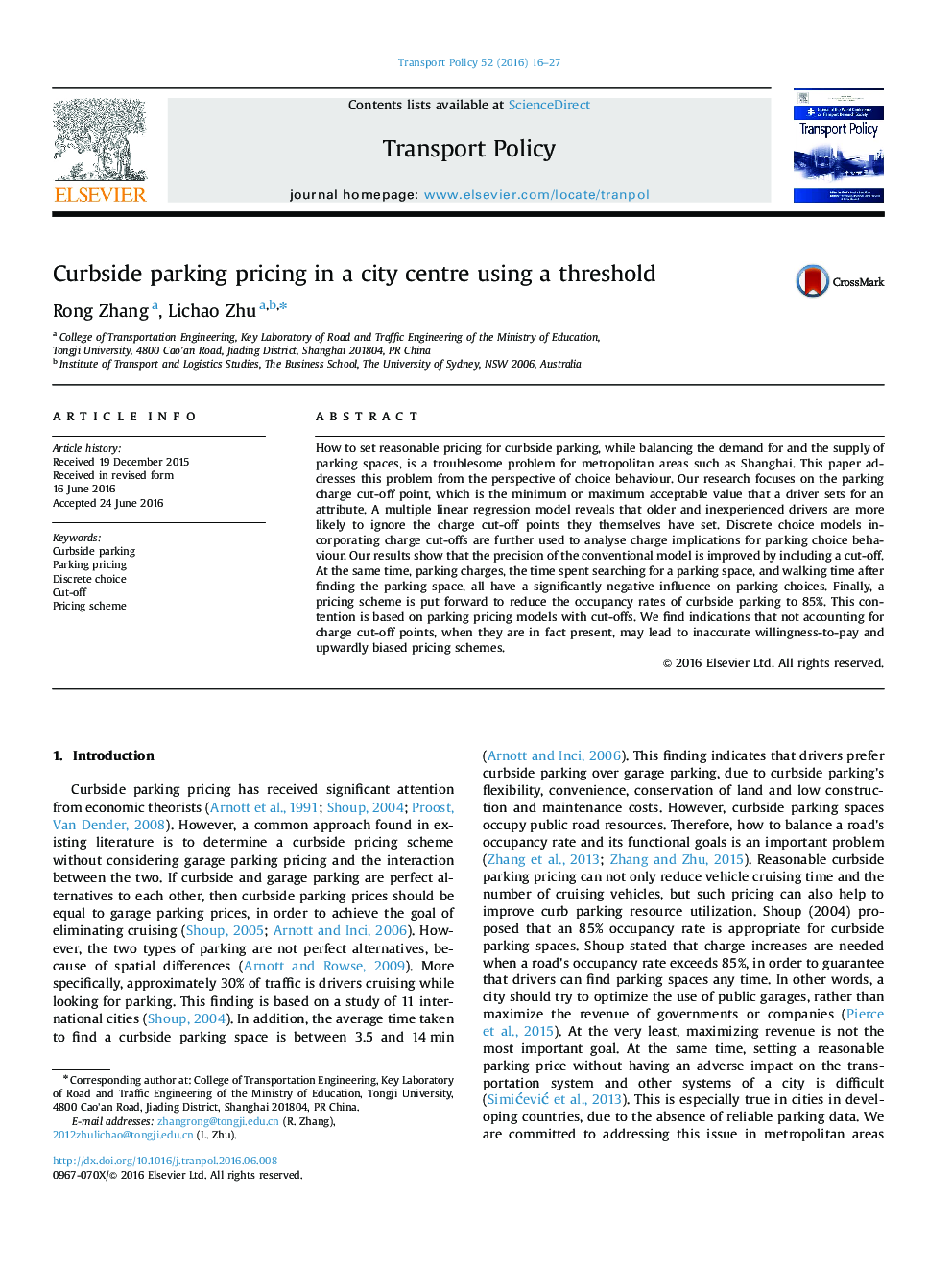| Article ID | Journal | Published Year | Pages | File Type |
|---|---|---|---|---|
| 7497379 | Transport Policy | 2016 | 12 Pages |
Abstract
How to set reasonable pricing for curbside parking, while balancing the demand for and the supply of parking spaces, is a troublesome problem for metropolitan areas such as Shanghai. This paper addresses this problem from the perspective of choice behaviour. Our research focuses on the parking charge cut-off point, which is the minimum or maximum acceptable value that a driver sets for an attribute. A multiple linear regression model reveals that older and inexperienced drivers are more likely to ignore the charge cut-off points they themselves have set. Discrete choice models incorporating charge cut-offs are further used to analyse charge implications for parking choice behaviour. Our results show that the precision of the conventional model is improved by including a cut-off. At the same time, parking charges, the time spent searching for a parking space, and walking time after finding the parking space, all have a significantly negative influence on parking choices. Finally, a pricing scheme is put forward to reduce the occupancy rates of curbside parking to 85%. This contention is based on parking pricing models with cut-offs. We find indications that not accounting for charge cut-off points, when they are in fact present, may lead to inaccurate willingness-to-pay and upwardly biased pricing schemes.
Related Topics
Social Sciences and Humanities
Social Sciences
Geography, Planning and Development
Authors
Rong Zhang, Lichao Zhu,
